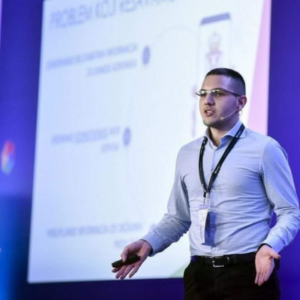Blog
Blog je mesto gde možeš da čitaš o navikama IT-evaca, najavama IT dešavanja, aktuelnostima na tržištu, savetima i cakama kako da uspeš na ovom dinamičnom polju.
Web dizajn za apsolutne početnike: Kodiranje u HTML-u | Besplatan kurs
Udemy je platforma za učenje na kojoj možeš pronaći mnogo kurseva, bez obzira na tvoj nivo znanja u programiranju. Na ovom kursu naučićeš osnove, kao i kako kreirati svoje prve stranice uz pomoć HTML-a, bez potrebe za prethodnim iskustvom. Budući da
Kako zaposleni u IT-ju vide svoje kompanije: Veća finansijska očekivanja, opada poverenje u menadžment
Na osnovu analize preko 2.000 recenzija IT profesionalaca sa sajta HelloWorld.rs, uočavamo pomak u doživljaju radnog okruženja. Kada se uporedi period od maja 2024. do maja 2025. sa istim periodom prethodne godine maj 2023. / maj 2024. vidi se da su utisc
Koji LLM koristiti u kom slučaju
Veliki jezički modeli (LLM – Large Language Models) postali su ključni alati u širokom spektru primena – od automatizacije korisničke podrške do programiranja i analize podataka. Međutim, kako se broj dostupnih modela povećava, postavlja se pitanje: koji
Nova Microsoft tehnologija uči AI da debaguje kod kao iskusni inženjer
Microsoft Research je predstavio debug-gym, novo okruženje koje uči veštačku inteligenciju jednoj od najkompleksnijih veština u programiranju - samostalnom pronalaženju i otklanjanju grešaka u kodu. Ova inovacija predstavlja značajan korak ka potpuno auto
Održan vebinar: Srpski startupovi - put od ideje do akvizicije
U organizaciji sajta HelloWorld.rs, 30. juna je održan vebinar posvećen srpskom startap ekosistemu, pod nazivom „Srpski startupovi - put od ideje do akvizicije“. Moderator vebinara bila je Anastasija Uspenski iz Netokracije, a njeni sagovornici bili su
Šef GitHub-a šalje poruku IT svetu: Najpametnije firme treba da zapošljavaju programere kao nikad pre
Tomas Domke veruje da veštačka inteligencija ne smanjuje broj programera, već otvara prostor za još više posla i razvoja u softverskoj industriji U vreme kada mnogi veruju da će veštačka inteligencija zameniti ljude u IT sektoru, šef GitHub-a Tomas Dom
Novosti
Na pravom si mestu ukoliko te zanimaju blog tekstovi o najvažnijim tehnološkim trendovima i aktuelnostima sa našeg sajta.
Iz ugla programera
Prostor za autentična iskustva, izazove i savete, pružajući uvid u svet programiranja direktno iz perspektive stručnjaka.
IT karijera
Istraži put ka uspehu. Nudimo ti najnovije online kurseve, korisne savete i edukacije za rast i razvoj karijere.
Dešavanja
Budi u toku sa dešavanjima u IT zajednici. Najave konferencija, vebinara, radionica i ostalih IT događaja.
Da ti ništa ne promakne
Ako želiš da ti stvarno ništa ne promakne, prijavi se jer šaljemo newsletter svake dve nedelje.



